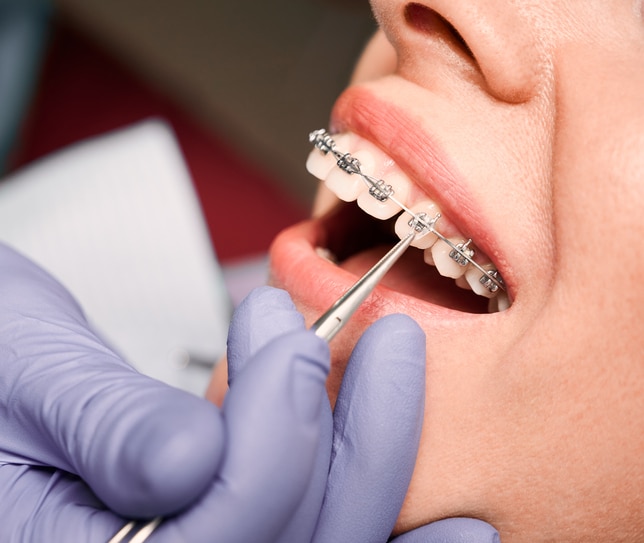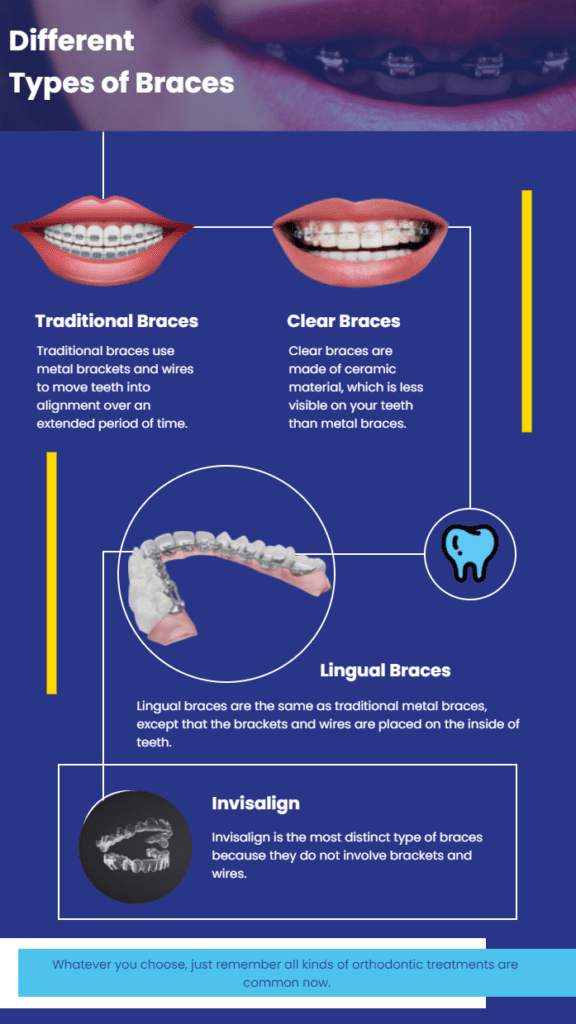Comprehensive Guide to Orthodontics Procedures for Correcting Dental Imbalances
Comprehending the ins and outs of each treatment, including their devices, advantages, and possible downsides, is vital in making educated choices concerning one's orthodontic therapy. As we browse via the thorough overview to orthodontic treatments for dealing with oral imbalances, the detailed details of each method will unravel, dropping light on the path toward a harmonious and functional oral placement.
Orthodontic Procedures Introduction

Along with conventional braces and clear aligners, orthodontists might likewise recommend other treatments like headgear, palatal expanders, or retainers to attend to particular alignment concerns (invisalign). These procedures are tailored per individual's one-of-a-kind requirements and may entail a mix of treatments to achieve the desired outcomes. Routine changes and surveillance are crucial components of orthodontic treatment to ensure progress gets on track and to make any type of necessary alterations along the road. By undertaking orthodontic treatments, patients can not only attain a straighter smile however also enhance their total dental health and feature.
Standard Dental Braces: Just How They Work
When thinking about orthodontic treatments for dental misalignments, traditional braces stand out as a tried and true method for correcting teeth placing. Standard braces are composed of brackets, cables, and bands that work with each other to apply continual stress on the teeth, progressively moving them right into the preferred placement.
One secret aspect of exactly how traditional dental braces work is the process of bone remodeling. As stress is related to the teeth via the dental braces, the bone surrounding the teeth is reshaped to sustain the brand-new tooth placements. This improvement is important for the long-term security of the corrected placement. Patients will require normal adjustments at the orthodontist's office to make sure the dental braces continue to apply the right stress for effective teeth motion.
Invisible Aligners: Cons and pros
Undetectable aligners supply a hassle-free and very discreet option to typical dental braces for dealing with dental misalignments. These clear, personalized trays are essentially invisible when used, making them an enticing choice for people seeking an extra visually pleasing orthodontic treatment. Among the main benefits of invisible aligners is their removability, permitting simpler upkeep of oral health contrasted to conventional braces. Individuals can eliminate the aligners prior to eating or brushing their teeth, decreasing the danger of food getting stuck in the home appliance and simplifying the cleaning process.

Surgical Orthodontic Options
Surgical interventions in orthodontics present sensible choices for dealing with intricate dental misalignments that might not be effectively settled through traditional orthodontic treatments. While standard dental braces and invisible aligners can fix over at this website lots of orthodontic concerns, certain situations need medical treatment to achieve ideal results. Surgical orthodontic alternatives are typically recommended for severe malocclusions, significant jaw discrepancies, and instances where the underlying bone framework requires adjustment to accomplish appropriate positioning.
One typical medical orthodontic procedure is orthognathic surgical treatment, which includes repositioning the jaws to correct functional issues such as trouble eating or talking. This surgery is frequently carried out in partnership with an orthodontist who helps align the teeth before and after the procedure. Surgical orthodontics might likewise include procedures to expose influenced teeth, remove excess gum tissue, or reshape the jawbone to create a more unified facial account.
Before thinking about medical orthodontic alternatives, clients undertake a thorough analysis to identify the need and prospective benefits of such interventions. aligners. While surgical procedure might appear overwhelming, it can substantially improve both the feature and aesthetic appeals of the smile in instances where traditional orthodontic therapies fail
Retainers and Post-Treatment Care

Failure to conform with post-treatment care directions can result in relapse, where the teeth gradually relocate back towards their initial placements. Constant retainer wear, great dental health, and routine dental examinations are necessary for keeping the outcomes attained via orthodontic surgery and ensuring the long-term stability of the fixed dental alignment.
Final Thought
In final thought, orthodontic treatments offer various choices for remedying dental imbalances. Standard dental braces use steel brackets and cables to shift teeth into appropriate placement. Invisible aligners provide a more very discreet option however may not appropriate for all instances. Surgical browse around here orthodontic choices are available for more extreme misalignments. Retainers are typically made use of post-treatment to preserve the new placement. Generally, orthodontic procedures can properly enhance dental wellness and aesthetic appearance.
As we browse through the thorough guide to orthodontic treatments for fixing oral misalignments, the complex details of each technique will certainly unfold, dropping light on the path toward a unified and functional oral alignment. - cumming orthodontist
One of the most common orthodontic therapies is the usage of braces, which consist of steel braces and wires that apply mild pressure to slowly change teeth into the desired setting.When considering orthodontic treatments for oral imbalances, standard dental braces stand out as a time-tested technique for dealing with teeth positioning. Furthermore, invisible aligners may not be ideal for complex orthodontic problems that call for even more significant teeth motion, as they are commonly suggested for moderate to modest instances. Retainers are custom-made orthodontic gadgets designed to hold teeth in their fixed settings after the conclusion of orthodontic therapy.
Comments on “How Cumming Orthodontics Addresses Common Braces and Invisalign Problems”